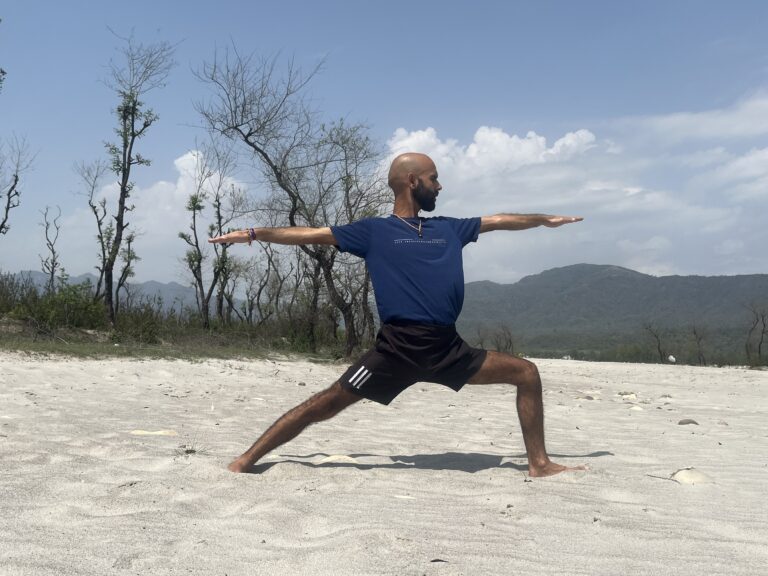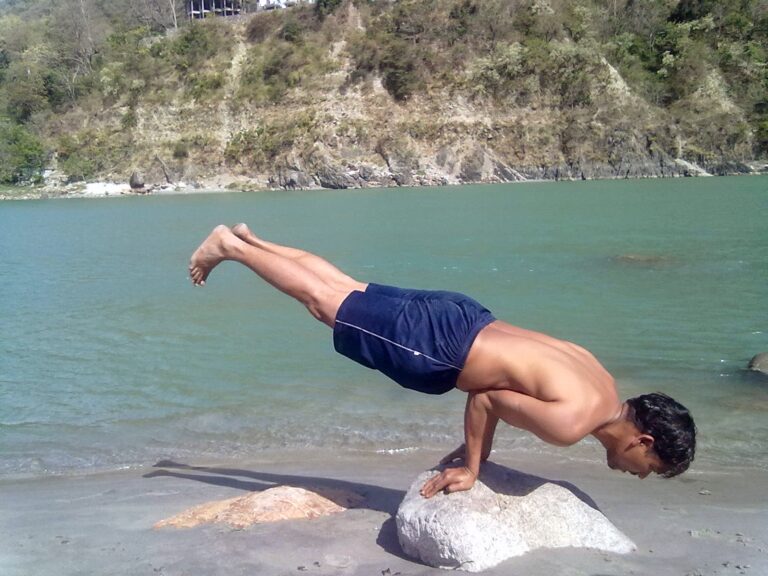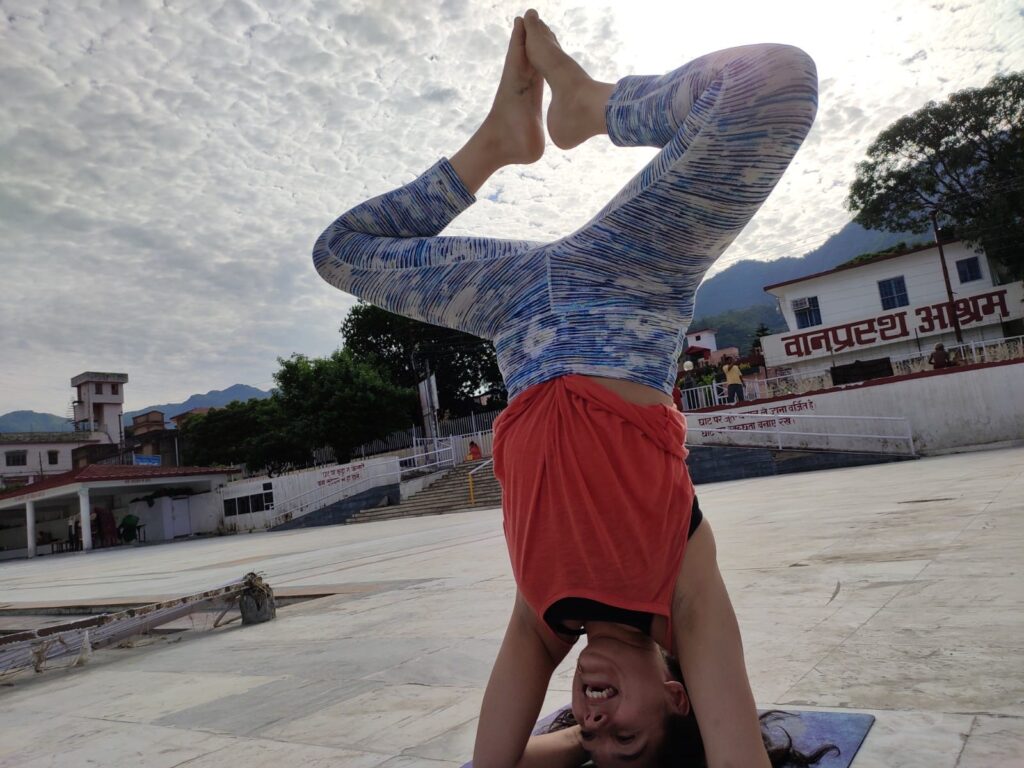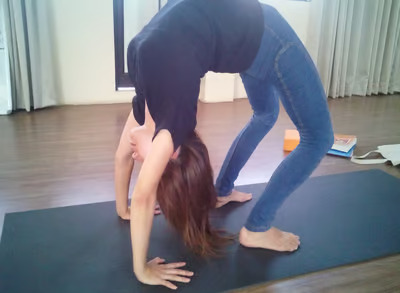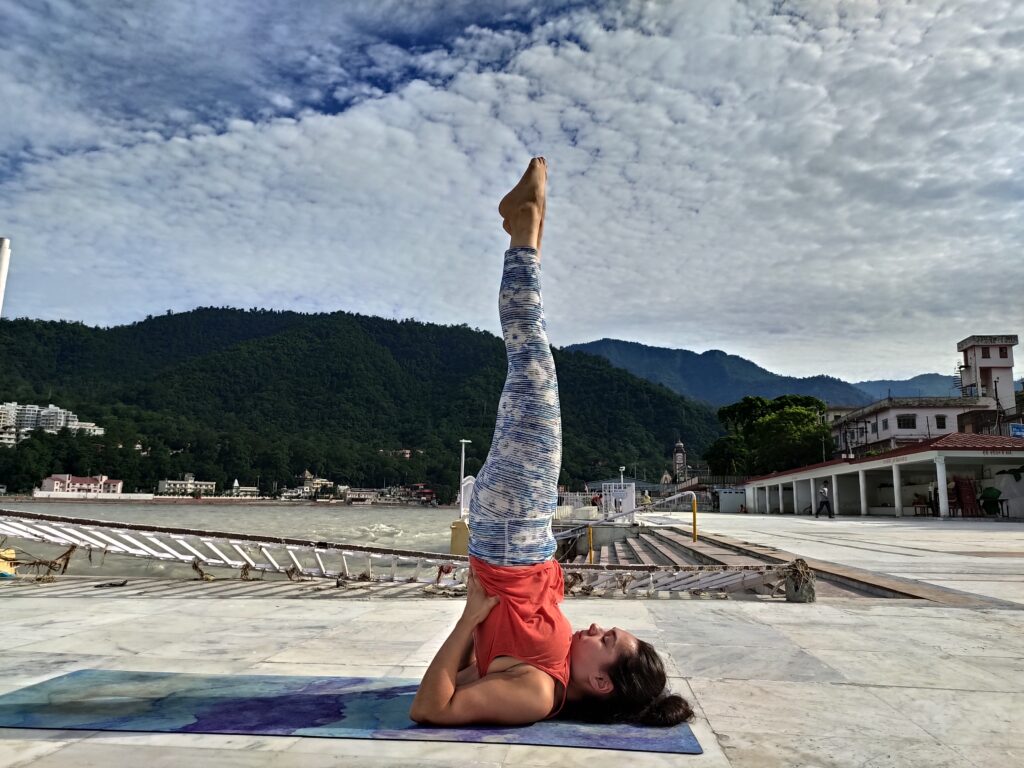Soham Yoga School: Yoga Blog
Soham Yoga School Rishikesh, India
Poorna Shalabhasana is a powerful posture that challenges the body’s strength, flexibility, and balance. While it may take time to master, the benefits it offers—such as improved spinal health, core strength, and mental focus—are well worth the effort. With consistent practice, this asana can help you deepen your yoga journey and unlock new levels of physical and mental well-being.Read More…
"Understanding Karma Yoga: The Path of Selfless Action"
Karma Yoga, as delineated in Hindu scriptures, particularly the Bhagavad Gita, is a path of spiritual practice that emphasizes selfless action and duty without attachment to outcomes. The following sections provide a detailed exploration of Karma Yoga according to key Hindu scriptures: Read More…
Moksha Through Bhakti Yoga
Bhakti Yoga, as elucidated in the Bhagavad Gita, is the path of devotion and love towards the divine. The Gita presents Bhakti Yoga as one of the primary paths to spiritual liberation (moksha), alongside Karma Yoga (the path of selfless action) and Jnana Yoga (the path of knowledge). Here’s a detailed exploration of Bhakti Yoga according to the Bhagavad Gita: Read More…
The yogic diet is more than just a way of eating; it’s a holistic approach to nutrition that aims to support overall well-being and spiritual growth. Rooted in ancient Ayurvedic principles and yogic philosophy, this diet emphasizes foods that are natural, pure, and conducive to maintaining a balanced body and mind. In this blog, we will explore the principles of the yogic diet, its benefits, and practical tips for incorporating it into your daily life. Read More…
Urdhva Paschimottanasana, often referred to as the Upward Forward Bend Pose, is a rejuvenating yoga posture that combines the benefits of both forward bending and backward bending asanas. This asana is an intermediate level pose that requires flexibility, balance, and focus. In Sanskrit, “Urdhva” means upward, “Paschima” means west (referring to the back of the body), “Ut” means intense, and “Tan” means to stretch. Together, Urdhva Paschimottanasana translates to the intense stretch of the upper back region. Read More…
Embarking on a journey toward physical and emotional transformation, Chakrasana, commonly known as Wheel Pose, stands as a symbol of strength, flexibility, and heart-opening. In this comprehensive guide, we will explore the step-by-step approach to Chakrasana, its myriad benefits, modifications with and without props, as well as contraindications to ensure a safe and fulfilling practice. Read More…
In naturopathy and various holistic health traditions, the concept of the five fundamental elements—earth, water, fire, air, and ether (or space)—plays a crucial role. These elements, often derived from ancient systems of medicine like Ayurveda and Traditional Chinese Medicine, are seen as essential components that make up the universe and our bodies. Each element is associated with specific qualities and functions within the body, and balancing these elements is key to maintaining health. Here’s how each element is understood and applied in naturopathy. Read More…
Rajakapotasana, also known as King Pigeon Pose, is a dynamic yoga posture renowned for its ability to enhance flexibility, strength, and balance. In this comprehensive guide, we’ll delve into how to perform Rajakapotasana with proper alignment, explore its numerous benefits, discuss contraindications, and provide modifications to suit various practitioners’ needs. Read More…
Sarvangasana, commonly known as Shoulder Stand, is a revered yoga posture that offers a plethora of physical and mental benefits. As an inversion pose, it holds a special place in yoga practice for its ability to rejuvenate the body, calm the mind, and promote overall well-being. In this blog post, we’ll explore how to perform Sarvangasana step by step, its benefits, as well as contraindications and modifications for safe practice. Read More…
Sukhasana, the Easy Pose, embodies tranquility in yoga. Seated cross-legged, it fosters comfort, aligns the spine, and calms the mind. Beyond physical benefits, it’s a gateway to inner peace, self-awareness, and acceptance. In its simplicity lies its power—a sanctuary of serenity amidst life’s chaos. In the fast-paced hustle and bustle of modern life, finding moments of calm and tranquility can feel like a luxury. However, amidst the chaos, there exists a simple yet powerful practice that can help you tap into a serene state of mind – Sukhasana, also known as the Easy Pose in yoga. Read More…
Shalabhasana, also known as Locust Pose, is a fundamental yoga asana that targets the back muscles, strengthens the spine, and enhances overall flexibility. In this guide, we’ll explore how to perform Shalabhasana correctly, its various benefits, and important contraindications and modifications to ensure a safe and effective practice. Read More…
Bhujangasana, commonly known as Cobra Pose, is a foundational yoga posture that offers a multitude of physical and mental benefits. It is practiced as part of Hatha and Vinyasa yoga sequences and is revered for its ability to strengthen the back, open the chest, and invigorate the body. yoga.Read More…
Pranayama, or yogic breathing exercises, can be a valuable complementary therapy for individuals with asthma. While pranayama is not a substitute for medical treatment, it can help improve respiratory function, reduce the frequency and severity of asthma symptoms, and enhance overall well-being. Here are some pranayama techniques that may. Read More…

Nestled in Rishikesh, Soham Yoga School offers Yoga Alliance certified teacher training programs in Hatha and Ashtanga yoga styles. Emphasizing meditation, pranayama, “and” yoga philosophy, each course—from “100” to “500” hours—promises deep learning “and” personal growth. With comfortable accommodation “and” nutritious meals, graduates gain internationally recognized certifications “and” profound yoga knowledge.





